A range of teacher professional learning programs will be developed to accompany the Biodiversity of the Western Volcanic Plains online outreach...
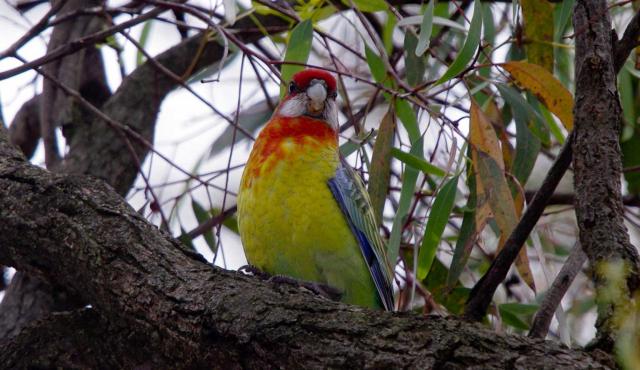
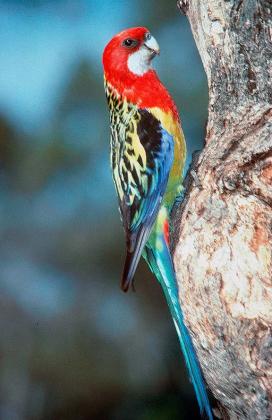
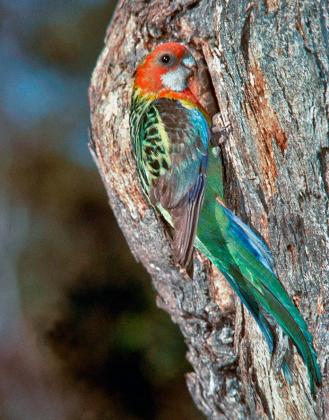
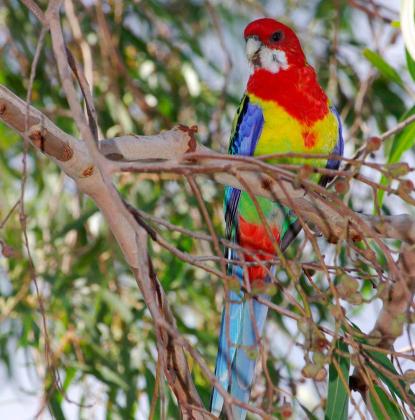
Eastern Rosella
Platycercus eximius
Breeds August-February. Eggs are laid in a eucalypt hollow, stump or fence post. Pairs mate for life. The femaie incubates the eggs, being regularly fed by the male.
| Details | Description |
| Type | Bird |
| Group | Parrot |
| Other Common Names | White-cheeked Rosella |
| Identifying Characteristics | |
| Distinctive Markings | This parrot may be distinguished by its red head and white cheek patches. |
| Diet | Omnivore, feeds on the ground and in trees and shrubs. Eats seeds, fruits, flowers, buds, nectar and insects. |
| Habitat | Grasslands, open grassy forests, woodlands, timbered watercourses, farmland, roadsides, parks and gardens. |
| Native Status | Native to Australia |
| Sounds | A brisk "pink-pink", ringing "pee-p-peeee" and brisk chattering within groups. |
| Taxonomy | |
| Phylum | Chordata |
| Class | Aves |
| Order | Psittaciformes |
| Family | Psittacidae |
| Genus | Platycercus |
| Species | eximius |
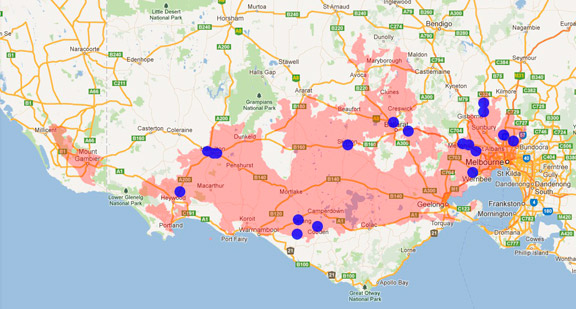
Distribution maps indicate current and historic locations where species have been sighted.
Source: Atlas of Living Australia
| Conservation Status | |
| DEPI Advisory List | Not listed |
| FFG Act | Not listed |
| EPBC Act | Not listed |
The conservation status of species is listed within Victoria and Australia.
The Department of Environment and Primary Industry (DEPI) Advisory List consists of non-statutory advisory lists of rare or threatened flora and fauna within Victoria.
The Flora and Fauna Guarantee Act 1988 (FFG Act) lists threatened species in Victoria. Under the Act, an Action Statement is produced for each listed species.
The Environment Protection and Biodiversity Conservation Act 1999 (EPBC Act) is the Australian Government’s key piece of environmental legislation, listing nationally threatened native species and ecological communities.



